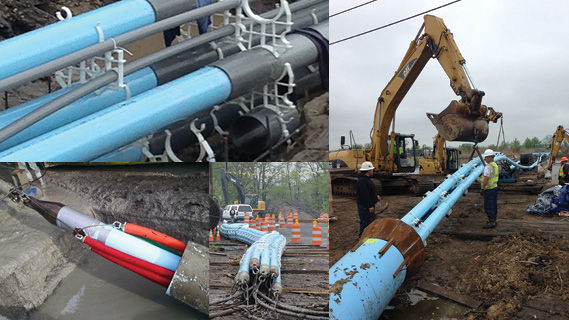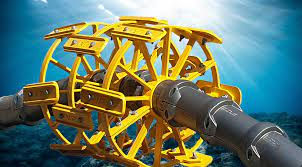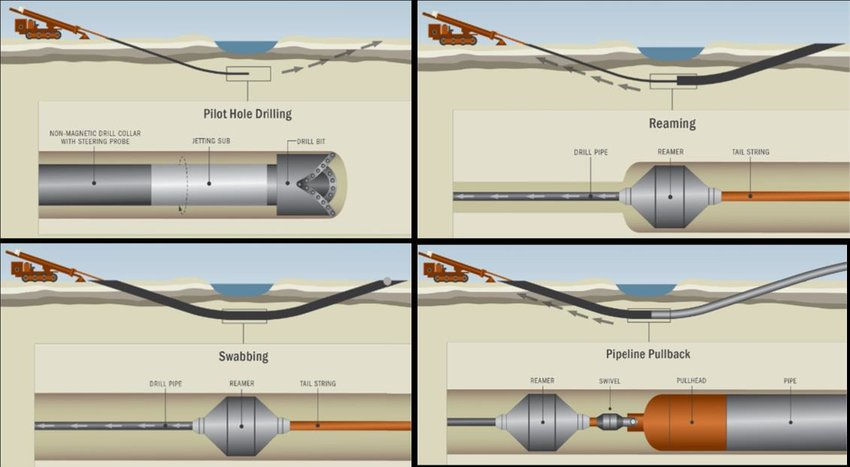What are the Common Applications of Directional Boring in Construction Industry?
- Grid Tech
- Dec 12, 2023
- 3 min read
In the world of construction, innovation plays a pivotal role in enhancing efficiency, reducing disruption, and minimizing environmental impact. One such innovation that has revolutionized underground construction is directional boring. This trenchless technology has opened up a world of possibilities, enabling projects that were once challenging or impossible using traditional methods.
Today, in this blog, we will explore the common applications of directional boring in construction and how this technique is shaping the future of infrastructure development.
Common Applications of Directional Boring in Construction

Utility Installations:
Directional boring is widely used for the installation of utilities such as water lines, gas pipelines, and electrical conduits. Unlike open-cut methods that require extensive trenching, directional boring minimizes surface disruption. This makes it an ideal choice for densely populated urban areas where minimizing inconvenience to residents and businesses is essential.
The process involves drilling a borehole from a starting point to a designated end point underground, threading the utility through the borehole, and then pulling it back to its original position. The result is a seamless installation with minimal environmental impact.
Fiber Optic Cable Installation:
The demand for high-speed internet and improved connectivity continues to grow, driving the need for efficient fiber optic cable installations. Directional boring is the go-to method for laying fiber optic cables, as it allows for the installation of long stretches of cable without disturbing roads or landscapes.
With directional boring, service providers can quickly and cost-effectively expand their network infrastructure, bringing high-speed internet access to more communities. This application of directional boring is particularly vital in rural areas and underserved regions.

Sewer and Drainage Systems:
When it comes to sewer and drainage systems, directional boring provides a sustainable and effective solution. Municipalities and contractors use this technique to replace aging pipes, extend sewer lines, and improve stormwater management. The ability to navigate obstacles underground makes directional boring a preferred choice for these critical infrastructure projects.
Additionally, directional boring minimizes the risk of soil contamination, which is a significant concern when dealing with sewage and drainage systems. This environmentally friendly approach safeguards the local ecosystem while ensuring efficient wastewater management.
Environmental Remediation:
Directional boring is also employed in environmental remediation efforts. When contaminants need to be removed or remediated from the ground, traditional excavation methods can exacerbate the problem by spreading pollutants. Directional boring, on the other hand, allows for precise drilling and extraction, minimizing the potential for further contamination.
This application is particularly valuable for cleaning up contaminated sites, such as former industrial properties. It helps protect groundwater and surrounding areas while facilitating the cleanup process.
Geothermal Heating and Cooling Systems:
As the world seeks more sustainable energy solutions, geothermal heating and cooling systems have gained popularity. Directional boring plays a crucial role in the installation of the underground loops required for these systems.
By drilling boreholes and placing the geothermal loops underground, directional boring ensures efficient heat exchange with the Earth's temperature, resulting in energy-efficient heating and cooling for buildings. This application contributes to reducing greenhouse gas emissions and lowering energy costs for property owners.

Cable and Pipeline Crossings:
Historically, traversing highways, rivers, and other formidable barriers with cables and pipelines necessitated cumbersome open-cut techniques, entailing significant expenses and time investments. Enter directional boring, a game-changing solution that obviates the need for intrusive trenches and simplifies the establishment of subterranean passages.
Whether it's an oil pipeline facilitating energy distribution, a high-voltage electrical cable powering communities, or a water supply line quenching the thirst of a region, directional boring offers a safe, efficient, and versatile installation method beneath challenging terrains and existing infrastructure. This not only minimizes disruptions to transportation networks but also safeguards the surrounding environment, emphasizing its critical role in modern construction and infrastructure development.
Golf Course Irrigation Systems:
Golf courses demand meticulous irrigation systems to sustain their lush, emerald fairways and greens. When it comes to installing irrigation pipes beneath these hallowed greens, directional boring emerges as the preferred method, ensuring that the playing surface remains undisturbed.
This innovative approach not only safeguards the golfers' experience by preserving the pristine quality of the courses but also aligns with environmentally conscious practices by conserving water through highly efficient irrigation methods. It strikes a harmonious balance between the aesthetics and sustainability of golf course maintenance.

Conclusion
Directional boring has become a cornerstone of modern construction, offering a versatile and eco-friendly alternative to traditional excavation methods. From utility installations to environmental remediation and even golf course maintenance, its applications in the construction industry are vast and continually expanding. This technology not only enhances project efficiency but also minimizes disruption to communities and the environment.
As we look to the future of construction and infrastructure development, directional boring will undoubtedly play an even more significant role. Its ability to navigate complex underground environments and minimize surface disturbance positions it as a vital tool in the toolkit of construction professionals worldwide.
So, whether you are building the cities of tomorrow or enhancing existing infrastructure, directional boring is a technology that deserves attention and recognition for its contributions to the construction industry.


Comments